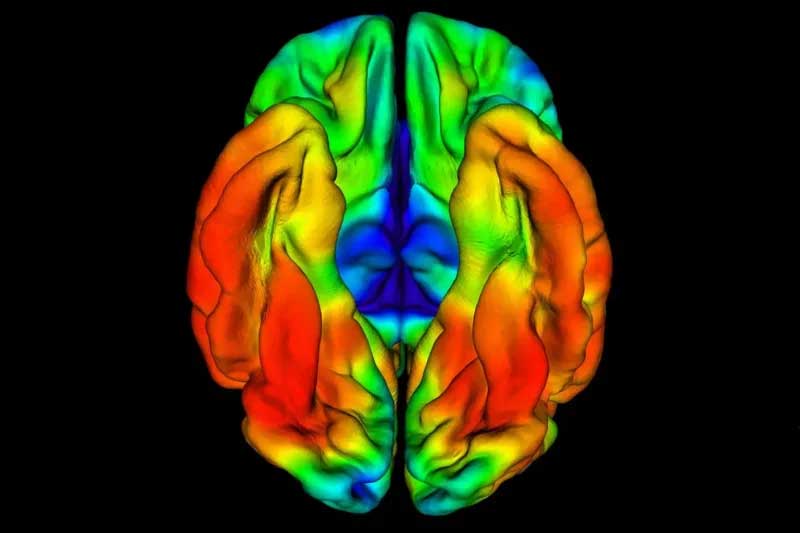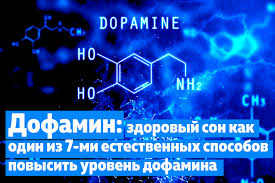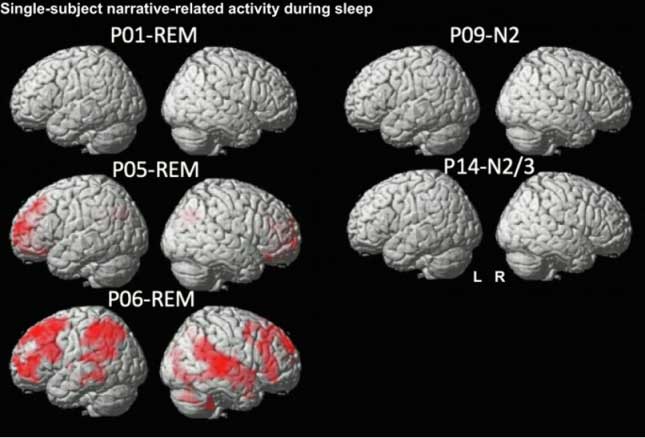A protein called Reelin keeps appearing in the brain that fights aging and Alzheimer’s disease. A protein that helps shape the brain early in life also appears to protect the organ from Alzheimer’s and other diseases associated with aging. Japanese and European neuroscientists have found that injecting large amounts of dopamine into the brains of mice predisposed to developing Alzheimer’s leads to accelerated production of an enzyme responsible for breaking down molecules of the pathogenic protein beta-amyloid.
Three studies published last year suggest that the protein Reelin helps maintain thinking and memory in diseased brains, although exactly how it does this remains unclear. The studies also show that when Reelin levels fall, neurons become more vulnerable.
There is growing evidence that reelin acts as a “protective factor” in the brain, says Li-Hui Tsai, a professor at MIT and director of the Picower Institute for Learning and Memory.
“I think we’re getting somewhere in the fight against Alzheimer’s disease,” Tsai says.
The research inspired the development of a drug that increases Reelin levels or helps it function better to prevent cognitive decline.
“It doesn’t take a genius to say, ‘More Reelin, that’s the solution,’” says Dr. Joseph Arboleda-Velazquez of Harvard Medical School and Massachusetts Eye and Ear Infirmary. “And now we have the tools to do it.”
In 2023, the protein Reelin became something of a scientific celebrity thanks to its study of the brain of a Colombian man who should have developed Alzheimer’s disease in middle age but did not.
The man, who worked as a mechanic, was part of a large family that carries a very rare gene variant known as Paisa, a reference to the area around Medellin where it was discovered. Family members who inherit the variant are almost certain to develop Alzheimer’s disease in middle age.
“They start to experience cognitive decline in their 40s, and in their late 40s or early 50s, they develop full-blown dementia,” Arboleda-Velásquez says.
However, this man, despite having this variant, retained cognitive abilities until the end of his sixties, and was only diagnosed with dementia at age 70.
After his death at age 74, an autopsy revealed the man’s brain was covered in sticky amyloid plaques, a hallmark of Alzheimer’s disease.
The scientists also found another hallmark of Alzheimer’s disease — tangled fibers called tau, which can damage neurons. But, oddly, these tangles were largely absent from a region of the brain called the entorhinal cortex, which is involved in memory.
“This is important because this area is usually one of the first to be affected by Alzheimer’s disease,” Arboleda-Velazquez says.
Researchers looked at the man’s genome. And they found something that might explain why his brain was protected.

This PET scan shows the brain of a Colombian man whose memory and thinking remained intact in his late 1960s, despite carrying a rare gene variant that almost always causes Alzheimer’s disease in people in their 40s. Yaquil T. Quiroz-Gaviria and Justin Sanchez/Massachusetts General Hospital
He carried a rare variant of the gene that makes the protein Reelin. A study in mice showed that the variant enhanced the protein’s ability to shrink tau tangles.
Although the study focused on one person, it created a stir in the world of brain science, even catching the attention of acting National Institutes of Health Director Lawrence Tabak.
“Sometimes a close study of even one truly remarkable person can lead to exciting discoveries with far-reaching implications,” Tabak wrote in his blog post about the discovery.
After the Colombian man’s study was published, many researchers “started taking an interest in Rilin,” Tsai said.
However, Tsai’s team had already studied the protein’s role in Alzheimer’s disease.
In September 2023, the team published an analysis of the brains of 427 people. It found that those who maintained higher cognitive function as they aged tended to have more neurons that produce Reelin. In July 2024, the team published a study in the journal Nature that provided further evidence to support the Reelin hypothesis.
The study involved a very detailed postmortem analysis of the brains of 48 people. Twenty-six of the organs came from people who had shown symptoms of Alzheimer’s disease. The rest came from people who appeared to have normal thinking and memory at the time of death.
Interestingly, some of these seemingly healthy people had brains full of amyloid plaques.
“We wanted to know, ‘What’s so special about these people?'” Tsai says.
So the team performed a genetic analysis of neurons in six different brain regions. They found several differences, including a surprising one in the entorhinal cortex, the same region that appeared to be protected from tau tangles in the Colombian man.
“The neurons in the entorhinal cortex that are most vulnerable to neurodegeneration in Alzheimer’s disease have one thing in common,” says Tsai: “They highly express reelin.”
In other words, Alzheimer’s disease appears to selectively damage neurons that produce reelin, a protein needed to protect the brain from disease. As a result, reelin levels drop, leaving the brain more vulnerable.
The discovery is consistent with what scientists learned from a Colombian man whose brain defied Alzheimer’s. He carried a variant of the RELN gene that appeared to make the protein more efficient. So it could compensate for any reelin deficiency caused by Alzheimer’s.
Arboleda-Velazquez said the study at least “confirms the importance of Reelin, which, I must say, has been overlooked.”
Rilin’s story might never have happened without the collaboration of about 1,500 members of a large Colombian family who carry the Paisa gene variant.
The first members of this family were identified in the 1980s by Dr. Francisco Lopera Restrepo, head of the clinical neurology department at the University of Antioquia. Since then, family members have participated in a number of studies, including trials of experimental drugs for Alzheimer’s disease.
During this time, scientists identified several family members who inherited the Paisa gene variant but retained cognitive health well beyond the age at which dementia typically develops.
Some appear to be protected by an extremely rare version of the APOE gene called the Christchurch variant, and others appear to be protected by the gene responsible for reelin.
Both of these discoveries were made possible by the fact that some members of the Colombian family underwent repeated examinations in their home country and even flew to Boston for brain scans and other complex tests.
“These people agreed to participate in the study, to donate blood, and to donate their brains when they died,” Arboleda-Velazquez says. “And they changed the world.”
Dopamine speeds up the “cleaning” of the brain in Alzheimer’s patients, significantly slowing down memory loss. Japanese and European neurophysiologists have discovered that the introduction of large amounts of dopamine into the brain of mice predisposed to developing Alzheimer’s leads to accelerated production of an enzyme responsible for the destruction of the pathogenic protein beta-amyloid molecules. This significantly slows down memory loss, the press service of the Japanese RIKEN Brain Research Center reported.
“We have shown that dopamine precursor therapy reduces the concentration of dangerous beta-amyloid deposits and improves memory in mice predisposed to developing Alzheimer’s disease. Understanding the mechanisms by which dopamine regulates the production of the enzyme neprilysin will help to develop new therapies to prevent the development of Alzheimer’s disease,” said Naoto Watamura, a researcher at the RIKEN Brain Research Center, as quoted by the organization’s press service.

The researchers made the discovery while studying the intracellular mechanisms that affect the production of an enzyme called neprilysin in mammalian brain tissue. This protein breaks down beta-amyloid molecules and other protein “junk” in the neurons of healthy people and animals, which is why disturbances in its production contribute to the development of Alzheimer’s disease and other forms of dementia.
Japanese and European biologists became interested in whether it was possible to force neurons to produce neprilysin more actively by introducing one of the existing hormones or signaling molecules into the body. Thus, scientists created a special culture of neurons from the cortex, hippocampus, and deep parts of the brain of mice and observed how adding various substances to it affected the activity of the NEP gene, which is responsible for the production of neprilysin.
These experiments showed that the introduction of the pleasure hormone dopamine or its precursor, the molecule L-DOPA, significantly increased the activity of the NEP gene and led to an increase in the concentration of neprilysin and to the clearance of neurons from beta-amyloid. The discovery forced the scientists to track how the introduction of L-DOPA into the body of mice predisposed to developing Alzheimer’s disease, as well as the forced activation of dopamine neurons, would affect the work of their brains.

The experiments showed that the concentration of beta-amyloid in the neurons of the cortex of mice dropped noticeably within a few weeks of the start of the therapy, as a result of which the mice remembered information about potential dangers in their enclosures much more often and better. L-DOPA-based drugs are already used to treat Parkinson’s disease, which gives hope for the rapid development of approaches that accelerate the cleansing of the brain of Alzheimer’s disease carriers from beta-amyloid, the scientists concluded.
Alzheimer’s disease is one of the most common types of senile dementia. Scientists believe that it develops as a result of the accumulation of beta-amyloid in neurons – toxic protein clumps consisting of damaged APP protein molecules. In addition to beta-amyloid, other toxic molecules, including damaged tau protein strands, accumulate in brain cells as Alzheimer’s disease develops.






